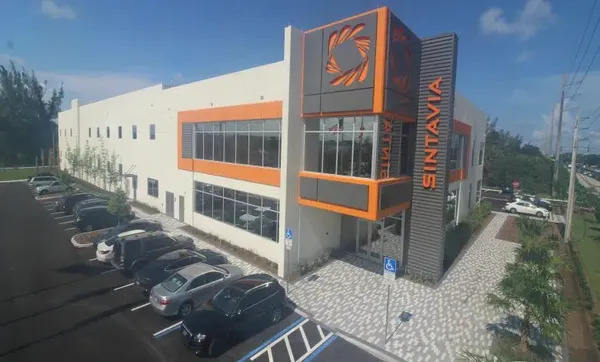Lockheed Martin and Sintavia Join to Advance Metal 3DP Research
The collaboration is part of Lockheed Martin’s commitment to the White House AM Forward initiative to expand the use of additive manufacturing and create resilient supply chains.
December 8, 2022

Lockheed Martin Corporation and Sintavia have launched a collaboration to expand research of metal additive manufacturing (AM) opportunities as an alternative to castings and forgings. Lockheed has focused on AM in its goal to improve efficiencies in existing castings and forgings supply chains and provide parts with a higher level of detail and greater design opportunities.
Sintavia is an AM supplier to Lockheed Martin, supporting several programs in the manufacture and production of metal additive parts. The new collaboration will explore additional AM technology areas, including laser powder bed fusion, electron beam-directed energy deposition, and friction stir AM.
The Government Push for AM R&D
This enhanced relationship builds on the White House initiative “AM Forward,” announced by President Joe Biden in May, a voluntary compact aimed at strengthening US supply chains by supporting US-based suppliers’ adoption and deployment of AM. “Sintavia and Lockheed Martin are committed to improving the capability, agility, and competitiveness of the defense industrial supply base,” said Brian Neff, Sintavia’s founder, and CEO. “Our partnership with Lockheed Martin seeks to identify and streamline manufacturing inefficiencies, specifically in the production of flight critical structures.”

The overall goal of the collaboration between Lockheed and Sintavia is to improve the ability to produce AM parts that exceed the quality and strength of traditional manufacturing. “Scaling AM practices also have the potential to improve the agility of casting and forging supply chains where legacy processes are often resource- and time-intensive, in part because of the small number of domestic suppliers,” Robert H. Head, VP of Lockheed Martin Government Affairs said in a statement. “If appropriately qualified and applied, we believe additive manufacturing can result in shrinking the lead times of parts, even under current supply chain conditions. To achieve this outcome, our suppliers—including small and medium-sized enterprises as well as large suppliers— will need considerable support.”
The Applied Science & Technology Research Organization of America (ASTRO America) responded to the announcement with this statement: “One of the best ways to reduce lead times and enhance innovation is to make more things in America, with more secure, resilient supply chains. That is the idea behind AM Forward, a voluntary compact that relies on the commitment of leading manufacturers to support their US-based suppliers’ adoption of new additive capabilities because they understand that doing this will pay dividends to their business and the economy.

Lockheed Martin will support AM goals by committing to work with suppliers to research to improve AM techniques specifically focused on the use of AM as an alternative to castings and forgings. Lockheed plans to work with a variety of 3DP OEMs and the US Government agencies to:
Explore establishing an AM material consortium to develop and share AM material properties and design data
Develop the framework to establish an AM Approved Supplier List (ASL) to simplify and accelerate the procurement process of AM parts • Participate in university and technical college programs for additive workforce development, including coursework and apprenticeship programs
Where feasible, share existing Lockheed Martin AM learning resources with a network of suppliers
With our community and technical college partners where we have existing advanced manufacturing apprenticeship and pre-apprenticeship programs, explore incorporating additive manufacturing into curriculum; and engage regional suppliers with the intent to scale the program
With external national entities (e.g., NIST MEP) facilitate geographic-driven supplier consortia to collaborate with national networks to activate access to AM training and technology solutions
Continue to drive critical AM standards development through leadership of and participation in Standard Development Organizations (SDOs) including SAE AMS, ASTM F42, ANSI, and AWS.
About the Author(s)
You May Also Like





